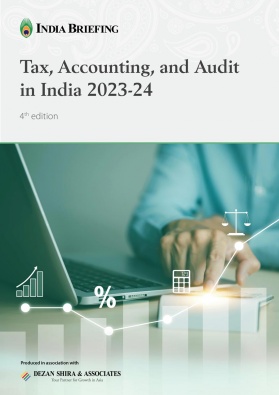India-US Ties 2023: Modi Trip Refocuses Attention to Trade, Tech, Defense
The India-US economic and strategic partnership has seen significant progress in recent years. In FY 2023, the US became India’s largest trade partner for merchandise goods, resulting in a total bilateral trade value of US$128.78 billion. This partnership has been further enhanced by shared strategic policies spanning the Indo-Pacific to West Asia. Both countries prioritize technological advancement, innovation, resilient supply chains, and inclusive, sustainable growth.
Indian Prime Minister Modi’s upcoming visit to the US, scheduled for June 21-23, 2023, is expected to facilitate crucial discussions over a wide range of topics, including defense and security cooperation, advancements in technology sectors such as telecom, semiconductors, and mobility, civil-nuclear cooperation, space exploration, collaboration in higher education, artificial intelligence, quantum technology, and counter-narcotics efforts.
In recent years, the India-US strategic partnership has consolidated further. The trade relations between the two have expanded exponentially, with bilateral trade hitting a record US$191 billion in two-way goods and services trade in 2022 and the US emerging as the top destination for India’s merchandise exports in FY 2023.
The year 2022 was rewarding for both democracies, which saw the forging of significant new partnerships, including the Indo-Pacific Economic Framework (IPEF), and the consolidation of existing ones, such as I2U2, Quad, etc. Tangible outcomes included the resolution of market access issues, the Quad focus on STEM, the signing of an Investment Incentive Agreement, the launch of Technology Innovation Hubs as a collaboration of the respective science agencies, a record level of trade and investments, etc.
This year kicked off with the successful conclusion of the 13th Ministerial Meeting of the India-US Trade Policy Forum (TPF). It must be noted that this forum lay dormant for four years until a relaunch in November 2021.
Experts and diplomats forecast that the future of India-US ties will determine the future of technology and innovation. With India holding the G20 presidency in 2023, the India-US partnership is further likely to intensify to achieve global growth objectives that are inclusive, sustainable, and focus on critical and emerging technologies, resilient supply chains, and climate action.
PM Modi’s visit to the US in June 2023: What’s on the agenda?
Prime Minister Narendra Modi has embarked on his inaugural official state visit to the United States, commencing on Tuesday, June 21. The visit entails a series of events, including the celebration of Yoga Day at the United Nations headquarters in New York, attendance at a state dinner hosted by President Joe Biden and First Lady Jill Biden, delivering an address to the US Congress, engaging with the Indian diaspora, and more. Notably, Prime Minister Modi is the first Indian leader to address the Joint Session of the US Congress twice, with the second address scheduled for June 22.
The primary objectives of Prime Minister Modi’s visit are to foster engagement with business leaders, connect with the Indian community, and interact with thought leaders from various fields. The focus lies on deepening bilateral ties between India and the US across key sectors, including trade, commerce, innovation, and technology. Expectations are high for significant announcements, particularly in the areas of defense cooperation and the sharing of advanced technology.
According to officials cited in a Reuters report, discussions will encompass cooperation in sectors such as semiconductors, cyberspace, aerospace, strategic infrastructure and communication, commercial space projects, quantum computing, and the utilization of artificial intelligence in industrial and defense applications. Moreover, the approval for the establishment of engine manufacturing capabilities in India, such as General Electric’s production of the GE-F414 jet engine for domestically manufactured fighter jets in partnership with Hindustan Aeronautics, is anticipated.
Furthermore, India is on the verge of finalizing a procurement deal worth US$3 billion with General Atomics for 31 armed MQ-9B SeaGuardian drones. These developments underscore the business-oriented aspects of Modi’s visit and demonstrate the expansion of India-US strategic partnership in the defense and technology sectors.
India-US collaboration and investments to boost semiconductor manufacturing in India
Just prior to the visit, Reuters reported on June 20 that India had given its approval to Micron to set up a semiconductor assembly testing marking and packaging (ATMP) unit (also called OSAT) in the state of Gujarat. Micron will qualify for production-linked incentives worth US$1.34 billion (INR 110 billion).
A key strategic outcome of the visit will involve further facilitation of the establishment of a robust semiconductor manufacturing ecosystem in India.
Two prominent American companies are set to launch a significant initiative focused on workforce training. This initiative aims to equip a considerable number of Indian engineers with the essential skills required in the semiconductor field.
These collaborative efforts will greatly contribute to the growth and advancement of India’s semiconductor industry.
India-US trade disputes nearing resolution on the sidelines of Modi’s US visit
India and the US are currently engaged in advanced discussions for an out-of-court settlement to resolve seven trade disputes that have been pending at the World Trade Organization (WTO), as reported by Livemint. This development coincides with Modi’s US visit.
The pursuit of an out-of-court settlement stems from the dysfunctionality of the WTO’s top court, the Dispute Settlement Body, caused by the US blocking the appointment of judges. The US has raised systemic concerns about the appeals court within the WTO, prompting the exploration of alternative dispute resolution methods.
This holds particular significance as the settlement talks address a longstanding dispute involving the imposition of a steep 25 percent tariff on Indian steel and a 10 percent tariff on aluminum exports by former US President Donald Trump in 2018, which triggered trade tensions between the two nations.
One of the primary points of contention between India and the US was India’s export subsidy programs, including schemes such as the Merchandise Exports from India Scheme (MEIS), Export Oriented Units Scheme, and various sector-specific schemes like Electronics Hardware Technology Park Scheme, Special Economic Zones, and Export Promotion Capital Goods Scheme.
The US contended that these subsidy programs offered financial advantages to Indian exporters, enabling them to sell goods at lower prices, which, according to the US, negatively affected American workers and manufacturers. This alleged violation of WTO norms, which prohibit subsidies that distort global trade, formed the basis of the dispute between the two countries.
The efforts to reach an out-of-court settlement demonstrate the willingness of both India and the US to find mutually agreeable solutions to trade disputes, particularly in light of the current challenges faced by the WTO’s dispute settlement mechanism. Resolving these disputes would help alleviate trade tensions and foster a more harmonious economic relationship between India and the US.
India-US TPF to focus on deepening trade and economic engagement
The India-US TPF aims to activate its working groups in the fields of agriculture, non-agriculture goods, services, investment, and intellectual property to address issues of mutual concern and deliver tangible benefits to both countries by resolving unresolved market access issues.
In the forum’s 13th meeting, India and the US underlined their eagerness to deepen bilateral trade and economic ties at the recently concluded ministerial meeting of the TPF.
During this meeting, both nations emphasized the significance of the forum in fostering robust bilateral trade ties and enhancing the bilateral economic partnership. Both nations decided to collaborate in order to strengthen supply chain resilience, particularly in the critical industries that underpin the two economies.
In the meeting, India and the US jointly established a new working group on “Resilient Trade” to advance bilateral discussion on a variety of topics that can improve the trade relationship, such as trade facilitation, helping workers, and fostering sustainable and inclusive growth, as well as common sustainability challenges like securing sustainable finance, scaling up innovative clean technologies, and adopting circular economy strategies.
Both countries also welcomed the finalization of the Turtle Excluder Device (TED) design. This collaboration for expediting the TED trials will ensure that the TEDs are effective in minimizing the impact of fishing on sea turtle populations and restoring market access for India’s export of wild-caught shrimp.
Additionally, during the meeting, India also highlighted its interest in the restoration of its beneficiary status under the U.S. Generalized System of Preferences (GSP) program, which the US agreed to consider.
India-US bilateral trade: Trends and outlook
The US is currently positioned as India’s largest trading partner with respect to merchandise trade, accounting for 11.98 percent of India’s total merchandise trade. As per US Census data, India-US merchandise trade in calendar year 2022 reached US$123.48 billion, up from US$113 billion in 2021.
In FY 2023, India and the United States achieved a notable milestone in their bilateral trade by surpassing a record value of US$128.78 billion, representing the highest figure to date. This marks the second consecutive year where the US has emerged as India’s largest trading partner. In FY 2022, the total bilateral trade between the two nations amounted to US$119.42 billion, with India’s exports to the US dominating imports.
Modi’s upcoming state visit to the US highlights the mutual intent of India and the US to enhance their collaboration in crucial sectors including defense, clean energy, technology, and space. This visit signifies a strong dedication to furthering joint efforts and forging stronger bonds between the two nations.
According to Piyush Goyal, Minister of Commerce and Industry for India, the India-US partnership is expected to evolve multifold in the upcoming years, and the bilateral trade in goods and services between both countries is anticipated to reach US$500–600 billion by 2030.
|
India-US Trade Statistics (FY 2018 – FY 2023) (in US$ Billion) |
||||||
|
|
2017-2018 |
2018-2019 |
2019-2020 |
2020-2021 |
2021-2022 |
2022-2023 |
|
India exports to US |
US$47.87 |
US$52.40 |
US$53.08 |
US$51.62 |
US$76.11 |
US$78.54 |
|
India imports from US |
US$26.61 |
US$35.54 |
US$35.82 |
US$28.88 |
US$43.31 |
US$50.24 |
|
Total trade between India and US |
US$74.48 |
US$87.95 |
US$88.90 |
US$80.51 |
US$119.42 |
US$128.78 |
|
India-US trade balance |
US$21.26 |
US$16.85 |
US$17.26 |
US$22.73 |
US$32.79 |
US$28.30 |
Major commodities traded between India and US
India-US bilateral hydrocarbon trade, which started in 2017, amounted to US$19 billion during FY 2022. US has also emerged as India’s fourth largest supplier of crude oil and second largest supplier of liquefied natural gas (LNG).
The principle commodities exported by India to the US are precious and semi-precious stones, drugs and pharmaceuticals, petroleum products, cotton fabrics, garments, marine products, iron and steel products, electrical equipment, and auto components. Several factors like a high consumption-driven growth in US, pent-up demand for items such as jewelry and electronics, diversification of supply chains by companies, etc. have contributed to this accelerated trend. Electronic component companies, too, have moved production to India. For example, Apple now exports a million smartphones from India to the US every month.
India’s import basket from the US primarily comprised of crude oil, which seized the largest share, along with other items like pearls, precious and semi-precious stones, petroleum products, coal, coke, organic chemicals, gold, and paper and paper board.
(This article was originally published on January 16, 2023 and last updated on June 21, 2023.)
About Us
India Briefing is produced by Dezan Shira & Associates. The firm assists foreign investors throughout Asia from offices across the world, including in Delhi and Mumbai. Readers may write to india@dezshira.com for more support on doing business in in India.
We also maintain offices or have alliance partners assisting foreign investors in Indonesia, Singapore, Vietnam, Philippines, Malaysia, Thailand, Italy, Germany, and the United States, in addition to practices in Bangladesh and Russia.
- Previous Article Understanding How the UK’s Withdrawal of GSP Concessions Will Impact Indian Exporters
- Next Article New Disclosure and Compliance Obligations for Listed Companies in India










